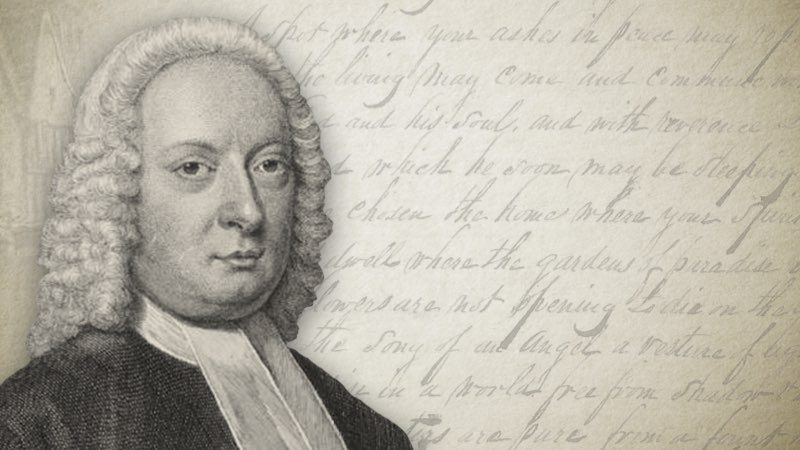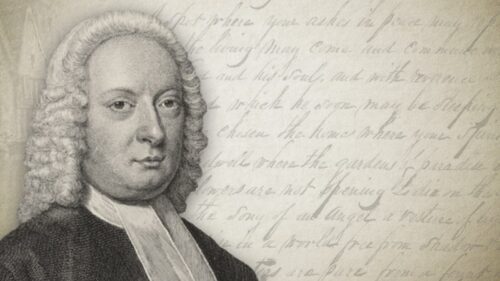-
43 Bible Doctrine – The ‘Introduction’ To Gill’s Body Of Divinity
I would like to welcome you back to another study in Bible Doctrine. In our previous study, I aligned the chapters of John Gill’s ‘Body of Doctrinal and Practical Divinity’ with the Framework of Sovereign Grace. I will be using this diagram as the key, or map, to navigate us through the teachings of Gill. For this study, I wish to look at Gill’s Introduction to systematic theology. He begins his Introduction by stating the reason for publishing a ‘Body of Doctrinal and Practical Divinity’. It was after completing his commentary on the Old and New Testament Scriptures, he chose to enter upon an exposition of systematic theology, which he delivered week by week, in the course of his pastoral ministry at Carter Lane Chapel.…
-
Body Of Divinity: Introduction
Having completed an Exposition of the whole Bible, the Books both of the Old and of the New Testament; I considered with myself what would be best next to engage in for the further instruction of the people under my care; and my thoughts led me to enter upon a Scheme of Doctrinal and Practical Divinity, first the former and then the latter; the one being the foundation of the other, and both having a close connection with each other. Doctrine has an influence upon practice, especially evangelical doctrine, spiritually understood, affectionately embraced, and
-
42 Bible Doctrine – Gill’s ‘Body Of Divinity’ Aligned With The Framework Of Sovereign Grace
I would like to welcome you back to another study in Bible Doctrine. In our previous studies, I have presented to you the table of contents belonging to John Gill’s Body of Divinity. He has divided his teachings into two parts. The first part is a doctrinal body of theology, composed of seven books, or branches, containing one-hundred-and-seven chapters. The second part is a practical body, composed of four branches, with one appendix and containing forty-nine chapters. We therefore have a total of eleven branches, one appendix and one-hundred-and-fifty-six chapters.
-
41 Bible Doctrine – Gill’s ‘Body Of Divinity’ And The Table Of Contents Rearranged
I would like to welcome you back to another study in Bible Doctrine. In our previous study, I presented to you the Table of Contents belonging to Gill’s ‘Body of Divinity’. He has arranged his teachings under a doctrinal and a practical body of theology. The doctrinal body is made up of seven “books”, or branches, of theology, with a total of one-hundred-and-seven chapters. The practical body is made up of four “books”, or branches, ending with an Appendix, having a total of forty-nine chapters. All in all, Gill’s systematic theology has a total of eleven chapters, one Appendix and one-hundred-and-fifty-six chapters. Now, for the purpose of aligning these branches and chapters with the Framework of Sovereign Grace, I have rearranged the headings. For this…
-
40 Bible Doctrine – Gill’s ‘Body Of Divinity’ And The Table Of Contents
I would like to welcome you back to another study in Bible Doctrine. We are looking in this study, at the table of contents belonging to John Gill’s ‘Body of Divinity’. Allow me to introduce the subject by referring you to the passage of Scripture read at the opening of our worship hour. When the Apostle Paul called together the gospel preachers who were ministering at Ephesus, it was the last time he would see them face to face, and therefore he took opportunity to give some apostolic instructions and pastoral counsels to the men. By way of example, and for the purpose of encouragement, he told them in...
-
39 Bible Doctrine – The Key To Unlocking John Gill’s ‘Body Of Divinity’
I would like to welcome you back to another study in Bible Doctrine. In our previous studies, I have introduced the life, legacy and writings of John Gill. Out of the twenty-five works highlighted, there are four which I have recommended every Christian should own and read: 1. “The Cause of God and Truth” (1735-38) 2. “An Exposition of the Old and New Testaments” (1746-48; 1763-66) 3. “Goat Yard Declaration of Faith” (1729) 4. “A Body of Doctrinal and Practical Divinity” (1769-70) Having given some background, explanations and samples of the first three works, I now come to the last—A Body of Doctrinal and Practical Divinity. Another term for ‘body’ is system, and another term for ‘divinity’ is theology. Henceforth, this is John Gill’s System…



